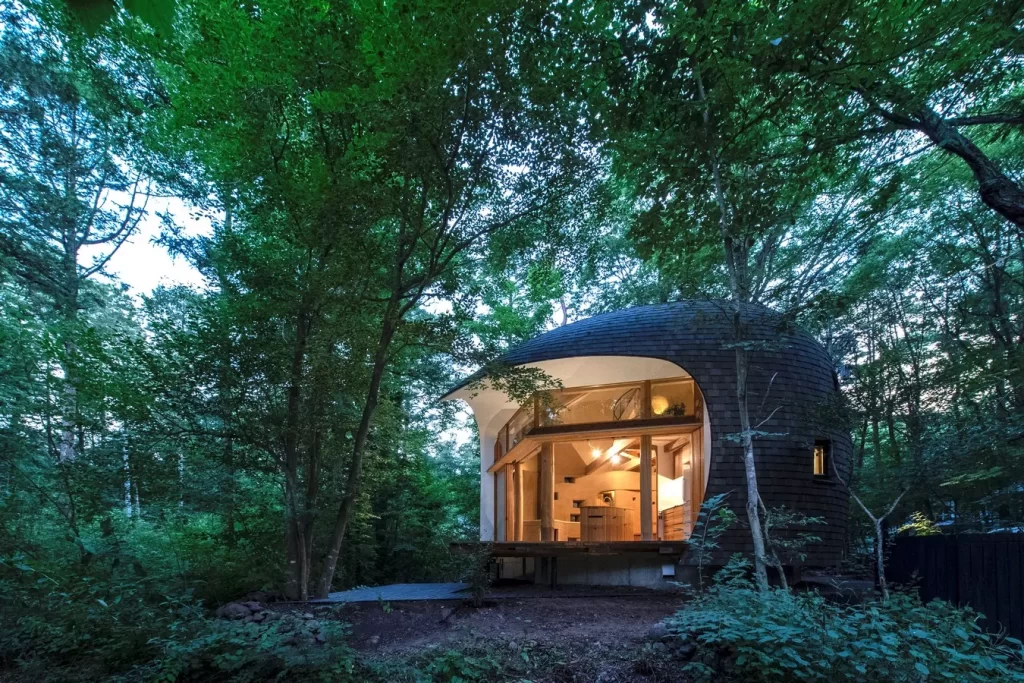The modern world has witnessed a surge in environmentally-conscious practices across various industries, reflecting a collective desire to preserve our planet’s health. Within this paradigm shift, the realm of pest control for cabin and tiny home rentals is no exception.
Gone are the days when extermination involved harsh chemicals without a second thought for the environment.
The pressing question, however, remains: Can eco-friendly pest control truly rival its traditional counterparts in terms of effectiveness when applied to cabins and tiny homes?
Understanding the Green Approach
Eco-friendly pest control hinges on the principle of causing minimal harm to the environment while combating unwanted pests. This approach prioritizes methods that are both safe for the environment and the inhabitants of a cabin or tiny home. Biodegradable products, natural repellents, and biological controls like beneficial insects are staples of this method.
Plant-Based Repellents
Harnessing the innate power of nature, several plants have properties that naturally repel pests. Eucalyptus, lavender, and citronella, for instance, are known to deter a range of insects. Incorporating these plants in the outdoor or indoor spaces of cabins and tiny homes can serve as an effective and eco-friendly pest barrier.
Biological Control Agents
Another promising avenue in green pest control is the use of biological agents. Predatory insects, such as ladybugs and lacewings, can be introduced to combat aphids and other pests specific to the surroundings of cabins and tiny homes. This method not only curtails the use of chemicals but also promotes a balanced ecosystem around these unique rental properties.

Diatomaceous Earth
A naturally occurring substance, diatomaceous earth, can be used to deter pests like ants and cockroaches. While harmless to humans and pets, its microscopic sharp edges can pierce the exoskeletons of insects, making it a potent and environmentally-friendly deterrent especially beneficial for smaller living spaces like cabins and tiny homes.
Comparative Performance
The effectiveness of green pest control methods varies depending on the specific pest and environment in question, including the unique challenges presented by small or remote dwellings like cabins and tiny homes. While some eco-friendly solutions prove to be as efficient as chemical alternatives, others may require repeated application or integrated strategies. It’s essential to tailor the approach based on the specific pest challenge for optimum results in these specialized settings.
Advantages Beyond Environmental Preservation
Safety and Health Benefits in Small Living Spaces
Eco-friendly pest control methods significantly reduce exposure to potentially harmful chemicals. This not only ensures the safety of the environment but also safeguards the health of cabin or tiny home occupants. Reduced chemical exposure translates to a diminished risk of allergies, respiratory issues, and other health complications, which is of great importance in smaller living spaces.
Supporting Biodiversity in Cabin and Tiny Home Environments
Traditional methods often have the unintended consequence of wiping out non-target species. By using targeted, green approaches, the balance of the ecosystem is preserved, supporting a rich tapestry of biodiversity, which is often a draw for those seeking cabin or tiny home experiences.
Potential Limitations and Considerations Specific to Cabins and Tiny Homes
Duration and Reapplication
Certain eco-friendly methods might necessitate more frequent application than their chemical counterparts. While plant-based repellents are sustainable, their efficacy might wane faster than synthetic products, requiring regular replenishment especially important in the small living quarters of cabins and tiny homes.
Cost Implications in Small Dwelling Pest Control
In some instances, green pest control solutions may carry a higher initial cost. However, when considering the broader picture, including health benefits and reduced environmental impact especially relevant for cabins and tiny homes, many argue that the investment is justified.
The Way Forward in Pest Management for Cabins and Tiny Homes
Eco-friendly pest control presents an exciting intersection of innovation and environmental responsibility. While the realm of green pest management is expansive, it is crucial to remember that not every solution will be a universal fit, especially in unique and compact living spaces like cabins and tiny homes. The effectiveness of these methods can sometimes be situational, with certain pests or environments presenting more of a challenge than others.
To make the most of green pest control methods, collaboration is essential. Property managers, cabin and tiny home owners, and pest control professionals must work in tandem, sharing knowledge and best practices. There’s also a role for educational institutions and researchers to play in this. By fostering an environment of continuous learning and experimentation, the industry can refine and perfect green pest control strategies particularly suited for cabins and tiny homes.
Final Thoughts
In the grand scheme of things, transitioning to eco-friendly pest control is not merely a trend or a fleeting phase—it’s a responsibility, especially for those who offer eco-conscious lodging options like cabins and tiny homes. The synthesis of traditional knowledge, cutting-edge research, and a commitment to sustainability has the potential to revolutionize how we perceive and practice pest control in these specialized settings.
And while challenges remain, the prospects for an effective, eco-friendly approach to pest management in cabins and tiny homes are brighter than ever. As with any transformative journey, persistence, adaptability, and an unwavering commitment to the environment will pave the way for success.



Comments
Loading…